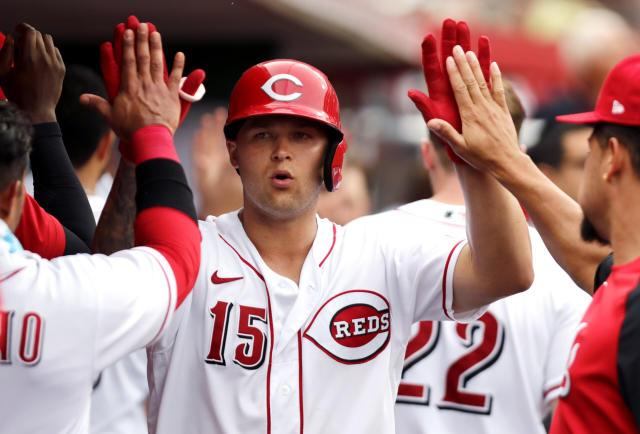The Cincinnati Reds made a significant decision today by choosing not to tender Nick Senzel, bringing an end to his tenure with the team. This move has sparked discussions among Reds fans, with some expressing their belief that the organization mishandled Senzel by transitioning him to the outfield.

It’s important to remember that in 2018, Eugenio Suarez, who had just been selected as an All-Star and had an impressive 34 home runs under his belt, signed a lucrative contract extension. Given Suarez’s team-friendly deal, the Reds had no intention of trading him, and Senzel wasn’t going to supplant him at third base in 2019.
However, the Reds’ most significant misstep with Senzel wasn’t their refusal to play him at third base in 2019; it was their decision to sign Mike Moustakas in December of that year and insist on playing him at second base in 2020.

Heading into the 2019 season, the Reds were filled with optimism. They had parted ways with manager Bryan Price, bringing in David Bell to lead the team and injecting a new sense of direction. The acquisition of Sonny Gray during the offseason, combined with promising young starting pitchers like Luis Castillo, Tyler Mahle, and Anthony DeSclafani, bolstered the team’s pitching staff.
Additionally, the Reds welcomed back three All-Stars from the previous season in Joey Votto, Eugenio Suarez, and Scooter Gennett. They also had exciting young talent in Jesse Winker and veteran contributors like Derek Dietrich and Jose Iglesias. And let’s not forget the dynamic Yasiel Puig.

If Nick Senzel was going to secure a spot in the starting lineup, it was most likely going to be in the outfield. The University of Tennessee product was highly regarded for his athleticism, prompting the Reds to shift him from the infield to the outfield.
Senzel had a productive rookie season, despite starting the year at Triple-A due to the Reds’ belief that Scott Schebler would be the better Opening Day centerfielder. Nonetheless, Senzel played in 104 games and posted a respectable slash line of .256/.315/.427.

Unfortunately, a preseason injury to Scooter Gennett in 2019 ended his tenure with the Reds. Gennett was subsequently traded to the San Francisco Giants, and Cincinnati experimented with various options like Jose Peraza, Derek Dietrich, and Freddy Galvis at second base.
Heading into 2020, the second base position was up for grabs. After Senzel’s rookie campaign was cut short due to a shoulder injury from crashing into the outfield wall, the Reds had an ideal opportunity to transition him to second base and seek a free agent centerfielder during the offseason.
While the Reds did sign Shogo Akiyama to a three-year, $21-million contract, their biggest move in free agency was signing Mike Moustakas to a four-year, $64-million deal, setting a club record. Regrettably, both players would go on to disappoint, with Akiyama exhibiting limited offensive impact and Moustakas struggling with injuries, much like Senzel.
In 2022, Cincinnati designated Akiyama for assignment, granting him an $8-million farewell. Prior to the 2023 season, Moustakas was also designated for assignment, receiving $22 million as he moved on to the Colorado Rockies.
Fans will inevitably reflect on Nick Senzel’s tenure with the Cincinnati Reds and engage in the “what if” game. However, the Reds’ most significant blunder wasn’t their decision to transition Senzel to the outfield but rather their failure to adapt once it became evident that he wasn’t a suitable fit, either in terms of position or team dynamics.
It’s worth noting that both the Reds front office and Nick Senzel himself bear responsibility for his unfulfilled potential. Senzel, despite being the second overall pick in the draft, didn’t live up to the lofty expectations placed upon him. Thus, both parties share the blame for Senzel’s shortcomings.